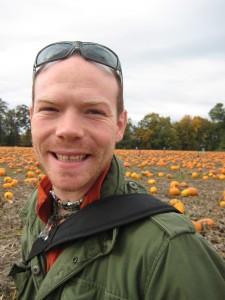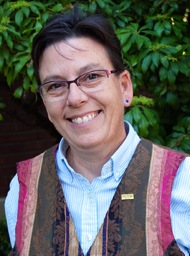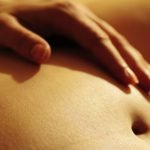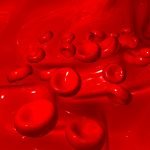Trusting a Space of Not Knowing: Stop, Look Both Ways, and Proceed with Caution
Student Scholarship – Honorable Mention Case Study
Node Smith, NCNM
Leslie Nicholas, ND
Vis Medicatrix Naturae. The healing power of nature. For many, this has become the driving force behind the prescription of botanicals, diets, and physical medicine procedures to heal certain ailments naturally. However, there is also an implication held within this phrase, an implication which truly represents the most basic and core ideas of the naturopathic profession: that we are all naturally healing. This is very powerful, yet so basic that it seems to hide from comprehension. At its essence, the Vis occupies that space which we have yet to define – a mysterious aspect of life existing on the boundary between the esoteric and the scientific, the physical and the metaphysical. The Vis operates outside of a need to know, or to define, and therefore negates the need for diagnosis to direct treatment.
Observe and Identify
The tangible quality of a diagnosis offers a certain sense of comfort when confronted with sickness, a palliative for the anxiety of not knowing. For a physician to be at ease within this space of anxiety is to be at ease with the mystery of the Vis. There is a certain faith which must be extended into the unknown in order to behold this mysterious power. The search for direction through diagnosis immediately contradicts the innate knowledge the body possesses to heal itself. The need for a diagnosis to definitively dictate the direction of treatment undermines this natural healing quality.
In many cases, diagnostic procedures such as labs and imaging can wait. There is an intermediate step which must be considered first – observation and identification. This is where we strive to reestablish the basis for health above all else. The first step is to identify and remove causes of disease. There’s no doing involved in this step. This is a time to observe the patient’s vital capacity, and decide whether healing can occur without going further up the Therapeutic Order. This step doesn’t necessitate a diagnosis, and in fact can become blurred if a diagnosis is too quickly pursued. Consider the following case as a perfect example of this point.
Case Study
Kate, a vibrant, yet nervous, middle-aged woman, presented to our community clinic complaining of chronic diarrhea of 4 months’ duration. When questioned on specific details, she was very vague; however, we ascertained that she was having loose, watery stools roughly every hour, sometimes more often, throughout the day. She was very distraught about the situation, and had self-diagnosed as having IBS.
The resident physician, primary student physician, and I were all very confused by her description of what was going on. She had been rather vague about her diet, though asserted to be eating very well, with little-to-no processed foods, no gluten, and a higher-than-average vegetable intake. She had also been rather unclear on the color, consistency, and amount of stool – only stating that she was voiding so frequently that she could not be without a bathroom for even an hour.
Assessment
The feeling of mystery was very high with this case, as the resident and students considered her symptom picture. The mystery began to initiate a certain level of anxiety as the possible processes which could be taking place were considered. All of us wanting to put a name to the symptoms: Irritable bowel syndrome? Infection? Colitis? SIBO? Parasite?… What could it be? And should we be concerned about electrolyte imbalances and dehydration? And what other sequelae should we be aware of? With such vague symptom description, a good working diagnosis was difficult. It was for this reason that talk of tests began to arise, the first being an O & P.
A parasite was possible… but then again…
This patient’s vague connection to her symptoms, represented by the lack of clear and concise details, her nervous and semi-erratic presence, and an overall feeling that we weren’t getting the whole picture, led us in another direction.
When in Doubt, Do Nothing
She had given us a small list of supplements she had been taking irregularly: a pre-natal multi, probiotic, magnesium, calcium, kava kava, and fish oil. Nothing immediately raised a red flag for these types of symptoms; however, combined with her overall ambiguous history, we decided to forego adding anything in terms of a treatment protocol – including running any tests – and instead take her off all supplements and have her return to clinic in 1 week.
It was certainly in support of the age-old philosophical adage “when in doubt, do nothing.” Lust and Lindlahr would be proud. We had decided to observe what the body wanted us to see, without any added intervention, to allow the Vis to operate freely. It also gave the primary and me an opportunity to exist in that state of mystery. In this place of unknowing, we were able to consider the oddities of the visit, and to more aptly assess the relationship this woman had with her symptoms and how that relationship had come out in the visit. This is an aspect of this case which could have been clouded by a reliance on a diagnostic test regimen.
One-Week Follow-Up
We were encouraged with our course of action when Kate returned in 1 week and described the frequency and intensity of her diarrhea as being, roughly, “half as bad.” At this visit we concentrated on her diet, sleep, and stress – all determinants of health. The answers she was inclined to give were similar to those in the first visit – clouded in ambiguity and nervousness. However, we did get a detailed diet diary of the previous 36 hours, as well as confirmation that it was fairly typical – it was adequately healthy, gluten-free, with dairy and eggs as the only major culprits, and lacked fiber. Of course, there were areas of her diet that we wanted to address, but that isn’t the keystone of this case.
It wasn’t until this second visit, when the anxiety of needing to find a diagnosis had passed, that we were able to see the awkwardness, vagueness, and ambiguity of the patient as an attempt to maintain a certain level of control over the stress with which she was unwilling to associate. There was a lot happening beneath the surface of this patient. Pressing her to recall details of her diet opened up an opportunity to discuss this relationship with stress, and how that stress might be relating to her complaints.
Identifying the Role of Stress in Kate’s Health
Kate had recently been released from prison, and was seeing us as part of an outpatient drug rehabilitation program. She was also in the midst of potentially losing her housing, and yet, in the midst of all this, persistently asserted having a relatively little amount of stress. All questions regarding her stress had been answered with a lackadaisical tone and the phrase “I don’t really have a lot of stress.”
Pressing her to consider all of the things which were going on in her life, including the possibility of being homeless, led to a great realization on her part that, in fact, she was experiencing an incredible amount of stress and was having difficulty relating to it. This became the larger issue.
A Breakthrough
There wasn’t an immediate recognition of a correlation to her diarrhea; however, the realization of how much stress she might actually be feeling gave us a monumental breakthrough in the case. Her presence seemed to shift. Nervous awkwardness dissipated subtly, and she became more engaged. She did confirm having a lot of stress, as well as being very worried about losing her housing. She had built various relationships with individuals she was living with, one with whom she had become quite close, and worried about losing this support. She also related to us that she had been using kava kava for anxiety, but didn’t like it as much as skullcap, which she had used in the past. This connection to her emotional state opened up new avenues of questioning, from which we ascertained an enjoyment of oil painting and a frustration with not having the financial stability to purchase supplies. The majority of the visit was spent talking with her about the various things going on in her life and in her mind, as well as how she might be able to pursue other creative outlets, such as watercolor, drawing, or acrylic painting.
On this visit, we chose to maintain a primary focus on reestablishing the basis for health, along with a subtle stimulation of the mind/body connection. Taking her diet diary into account, we recommended an increase in fiber, including foods such as flax meal (which she had), oatmeal, more vegetables and fruits, and nuts. We also advised her to be conscious of how much dairy, eggs, and meat she was eating, and that cutting out dairy and eggs for the following week would give us a better idea of how these common food allergens might be affecting her GI tract. She was amenable to the idea.
However, the cornerstone of our treatment plan was a homework assignment that we created for her. We outlined for Kate a 15 minute/day journal assignment, which entailed sitting down for exactly 15 minutes at some point each day during the following week and writing about anything which came to mind, especially things which were bothering her. There were 3 important details of this assignment. One, she could not write for any more or any less than 15 minutes. Two, she had to throw away each journal assignment after the 15 minutes was up. Next, and most importantly, she was advised to talk with 1 of 2 counselors whom she met with regularly about any emotions that came up during the journal assignment. We also gave her a bottle of freeze-dried skullcap, to be used as needed for stress and anxiety (since she was familiar with its effects and responded to it positively). With this simple protocol, we scheduled a follow-up visit for the following Monday.
Follow-Up
A week later, Kate no-showed. The primary and I wondered whether she had improved so much that she didn’t need to come in. However, because of the nature of the facility, we decided to wait until the following Monday to make a check-up phone call.
Two weeks after the second visit, on Monday afternoon, we called Kate to follow up and inquire as to the “no-show.” She was a new person. Her diarrhea had nearly completely subsided, to the extent that she no longer felt she needed to be managed for it. But beyond this, she had correlated her stress to her symptoms and confirmed that when she had days which were more stressful than normal, her diarrhea would return, albeit not as intensely. She had been diligently completing the journal assignment more often than not, and had even begun to do some drawing and painting. We ended the phone call with Kate assuring us that she would come in if anything came up, but that she was doing pretty well, and didn’t know if she needed to.
Comment
This case speaks volumes to the value of the space of the unknown – the space through which the Vis touches our understanding. By accepting the terms of our own anxiety, we may find avenues by which to listen and observe, and to comprehend the majesty of the human organism. This is truly an aspect of coming to realize the power of Vis Medicatrix Naturae. May our ears be sensitive to the persistent call of nature to stop, look both ways, and proceed with caution.
 Node Smith is currently a 3rd-year student at NCNM, where he instrumental in maintaining a connection to the philosophy and heritage of naturopathic medicine amongst the next generation of docs. He initiated and acts as president of the NCNM Philosophy Club, and was elected as the 2013/14 NMSA National Philosophy Chair. His biggest accomplishment to-date is the founding of a multi-generational retreat which brings elders, alumni, and students together for a weekend campout where naturopathic medicine and medical philosophy is experienced in nature: The ReVitalization Retreat. He has served as the lead coordinator for the ReVitalization Retreat for the last 2 years, and will continue on as co-lead in 2014.
Node Smith is currently a 3rd-year student at NCNM, where he instrumental in maintaining a connection to the philosophy and heritage of naturopathic medicine amongst the next generation of docs. He initiated and acts as president of the NCNM Philosophy Club, and was elected as the 2013/14 NMSA National Philosophy Chair. His biggest accomplishment to-date is the founding of a multi-generational retreat which brings elders, alumni, and students together for a weekend campout where naturopathic medicine and medical philosophy is experienced in nature: The ReVitalization Retreat. He has served as the lead coordinator for the ReVitalization Retreat for the last 2 years, and will continue on as co-lead in 2014.
 Leslie Nicholas, ND graduated from the National College of Naturopathic Medicine in 1992. She is currently an assistant professor at NCNM, and serves as an attending physician at several of NCNM’s community clinics. Dr Nicholas is also in charge of a pilot observation shift at the NCNM Clinic that focuses on providing transgender medicine, and will co-teach the first transgender medicine elective in Winter, 2014. Additionally, Dr Nicholas volunteers as a provider and the medical director for Mercy & Wisdom Community Clinic.
Leslie Nicholas, ND graduated from the National College of Naturopathic Medicine in 1992. She is currently an assistant professor at NCNM, and serves as an attending physician at several of NCNM’s community clinics. Dr Nicholas is also in charge of a pilot observation shift at the NCNM Clinic that focuses on providing transgender medicine, and will co-teach the first transgender medicine elective in Winter, 2014. Additionally, Dr Nicholas volunteers as a provider and the medical director for Mercy & Wisdom Community Clinic.










